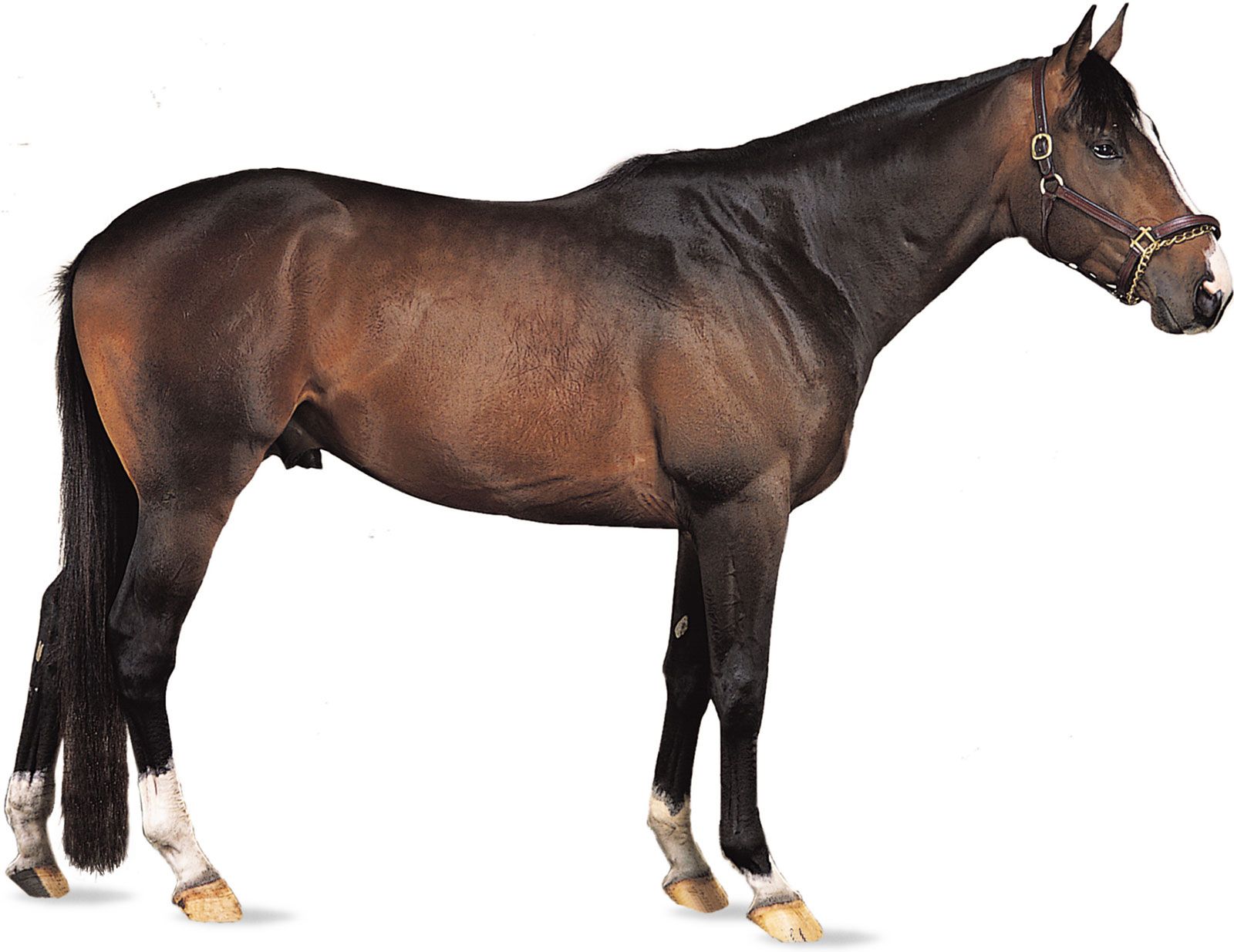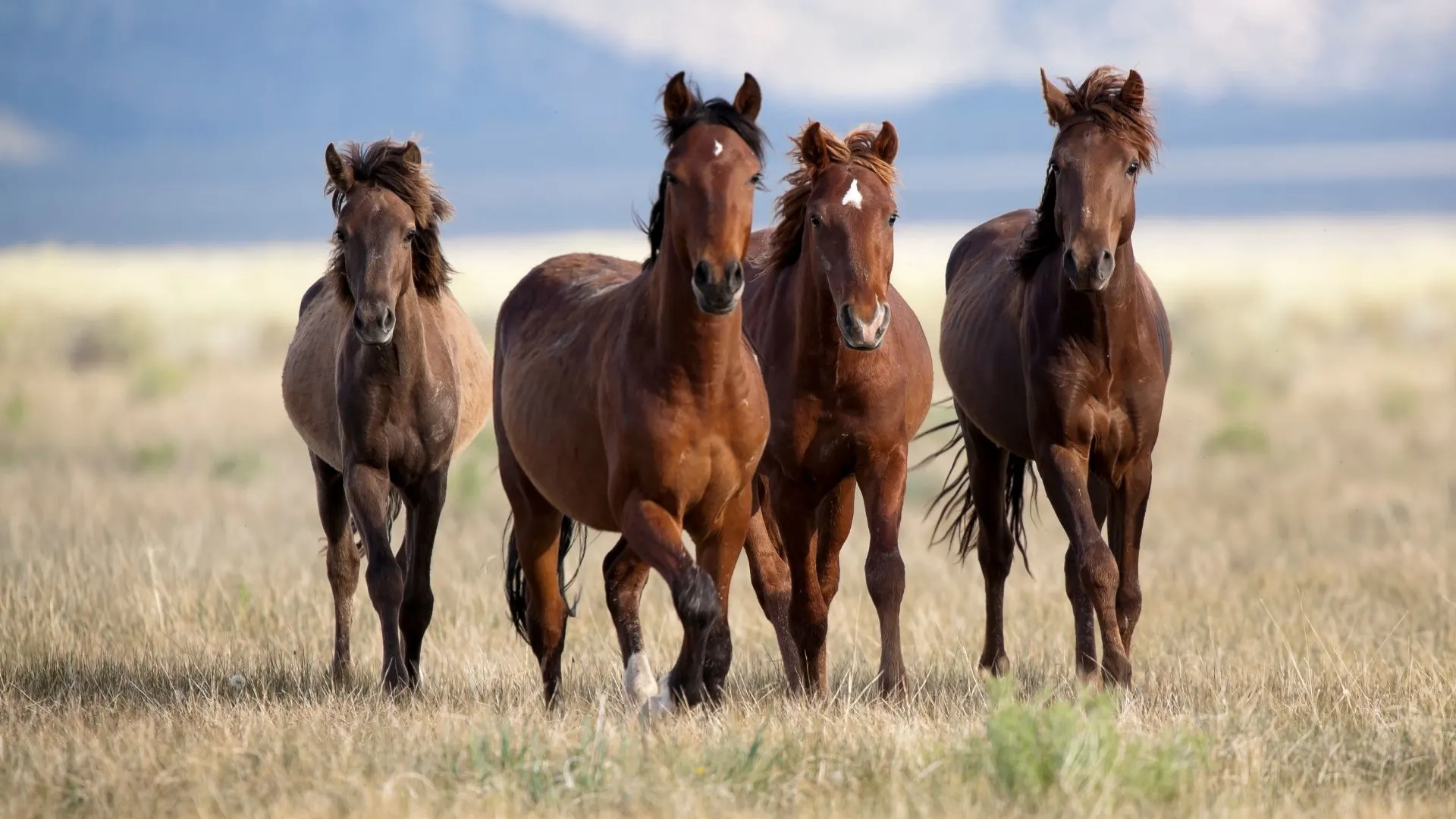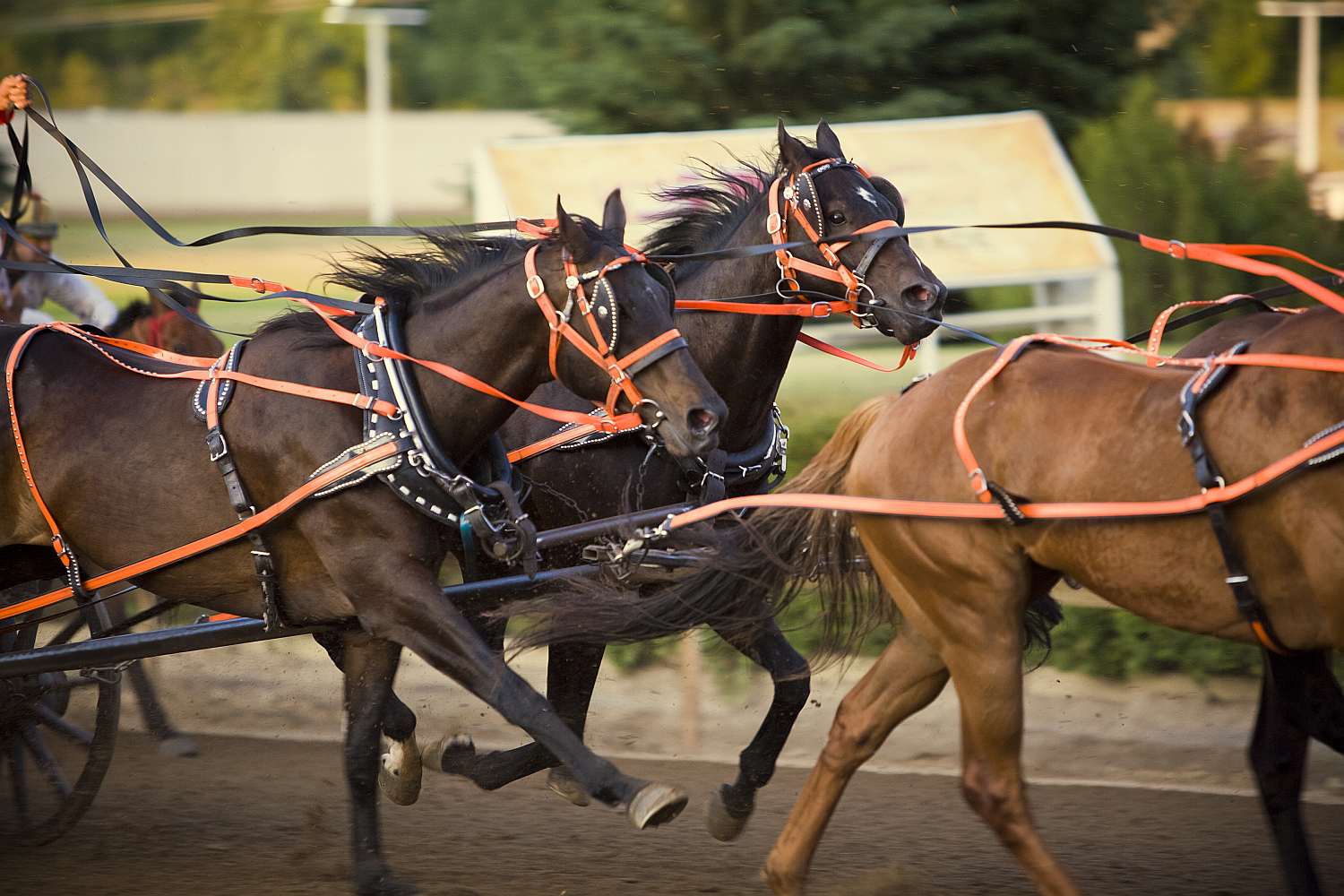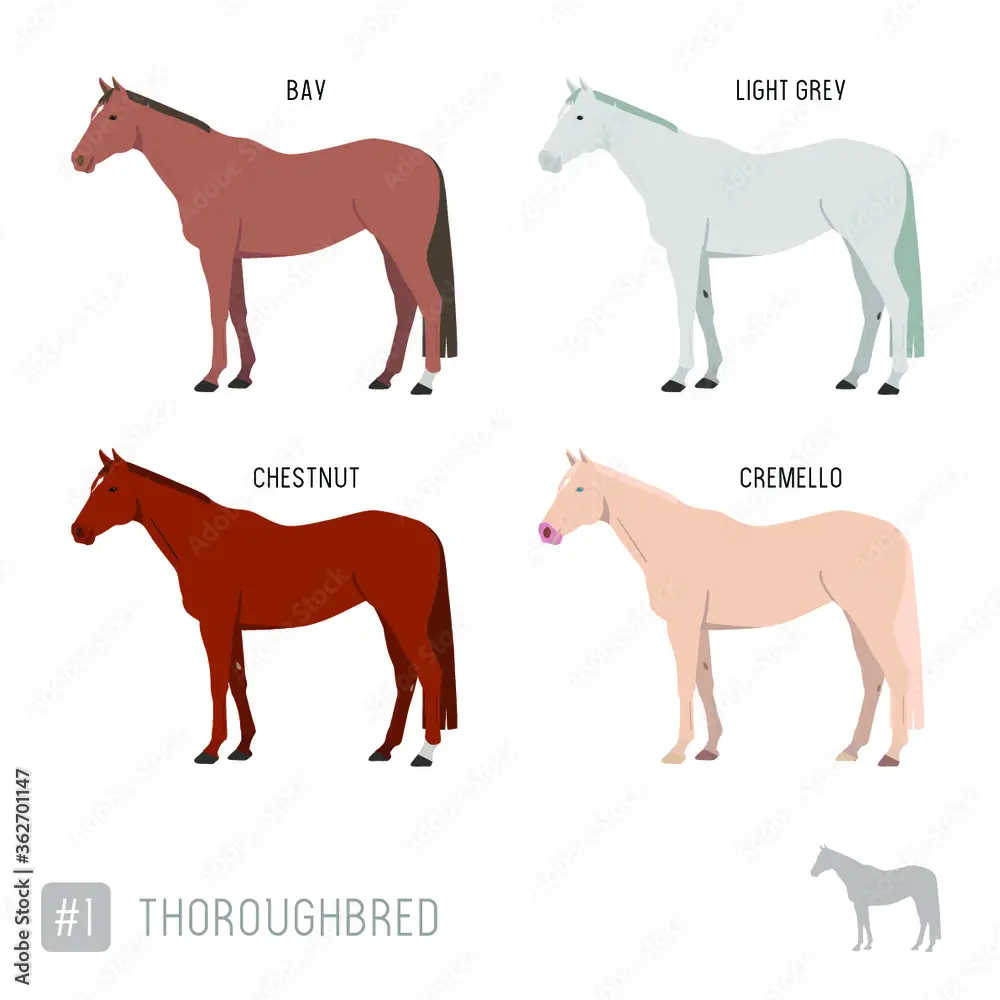The Thoroughbred horse breed is synonymous with speed, agility, and grace. Known for their impressive performance on the racetrack, these equine athletes have captured the hearts and imaginations of people worldwide. In this comprehensive look at the Thoroughbred, we will delve into their storied past, distinctive characteristics, and the care and training that goes into nurturing these magnificent animals. Whether you’re a seasoned equestrian or simply an admirer of these elegant creatures, understanding the Thoroughbred is key to appreciating their legacy in the world of horsemanship.
Delving into the Unique Thoroughbred Equine

As a pinnacle of equine performance, Thoroughbreds have evolved through a rich heritage. This exploration offers a fresh perspective on their unique attributes, how they stand out from other equines, and their evolutionary journey through the annals of horse racing.
Genesis and Development of the Thoroughbred
Thoroughbreds emerged from a deliberate breeding process initiated during the 17th century. The aim was to create a horse with unmatched racing capabilities, leading to the fusion of Middle Eastern stallions with robust English mares. This crossbreeding catalyzed the birth of a new kind of equine competitor.
Anatomy of a Champion
The anatomy of Thoroughbreds reflects their bred-for-purpose nature:
- Heights that allow for versatility on the racecourse
- Slim, muscular builds for optimal speed
- Expressive heads, signaling their high level of alertness
- Strong hindquarters providing exceptional propulsion
Their coats, gleaming in a spectrum of colors, further accentuate their majestic presence.
Evaluating Thoroughbred Distinctions
When juxtaposed with different horse breeds, Thoroughbreds shine in their specialized racing niche:
| Quarter Horse | Specialists in rapid, short distance bursts |
| Arabian | Stalwarts of stamina and endurance |
| Clydesdale/Shire | Epitomes of gentle strength and heavy labor |
Thoroughbreds excel in middle-distance events, displaying an unmatched combination of speed and endurance. Their sensitive and vivacious personalities also set them apart from more sedate breeds, necessitating experienced handling.
Lineage and Selective Breeding
The Thoroughbred’s lineage is a mosaic of Arabian, Barb, and Turkoman ancestry, giving rise to their competitive edge and dynamic temperament. This lineage has been scrupulously documented to preserve the breed’s integrity and excellence.
Adaptations for Peak Performance
Through centuries of selective breeding, Thoroughbreds have developed attributes that support their racing prowess, such as expansive lung capacity, a favorable muscle composition, and a lightweight skeleton that enhances their agility and speed.
Temperament and Versatility
Thoroughbreds possess a passionate and zealous spirit, making them both a challenge and a joy for equestrians. Their adaptability extends to disciplines like show jumping and dressage, although their high-spirited nature may not be suited for the inexperienced.
The legacy of the Thoroughbred is not just in its racing triumphs, but in the culmination of its history, biology, and athletic distinction. This deep dive into the breed accentuates our admiration and broadens our insight into these extraordinary equine athletes.
Exploring the Thrills of Thoroughbred Racing

The high-stakes world of Thoroughbred racing is a spectacle of equine excellence, where the breed’s innate speed and agility are on full display. This dynamic sport, steeped in tradition and pageantry, continues to captivate audiences and shape the legacy of these equine competitors. An understanding of the nuances of Thoroughbred racing enriches our appreciation for the precision and skill involved in this celebrated equestrian discipline.
Icons of the Track: Famous Thoroughbreds
Through the history of Thoroughbred racing, certain names stand out, symbolizing the zenith of equine athleticism. These renowned Thoroughbreds, like the celebrated Secretariat, known for his historic 31-length triumph in the 1973 Belmont Stakes, and the record-setting Man o’ War, have not only excelled on the tracks but have also shaped the sport’s history. Their remarkable achievements continue to influence and motivate the equestrian community.
Evolution of Thoroughbred Racing
From its genesis in aristocratic horse matches to the establishment of esteemed races such as the English Classic Races and the American Triple Crown, Thoroughbred racing has seen significant evolution. These events have developed into grand global attractions, enhancing the breed’s distinguished status in competitive sports and contributing to its worldwide acclaim.
Versatility Beyond the Racetrack
- Endurance Riding: Their prowess extends to endurance challenges, showcasing their lasting stamina.
- Eventing: Leveraging their speed and agility, Thoroughbreds are formidable competitors in this rigorous equestrian discipline.
- Polo: Their aptitude for quick maneuvers and rapid sprints makes them valuable players in the swift-paced polo arena.
Their capabilities stretch beyond their racing roots, underscoring their flexibility and athletic excellence in a variety of sports.
Regional Racing Traditions
Distinct regional customs in Thoroughbred racing reflect diverse rules, race lengths, and track surfaces. The preference for turf in European contests contrasts with North America’s inclination toward dirt tracks. The expansion into Asia and the Middle East has broadened the sport’s reach, contributing to its global allure and showcasing the adaptability of Thoroughbreds in different settings.
Innovations in Thoroughbred Racing
Technological advancements and novel training approaches have transformed Thoroughbred racing. The introduction of synthetic track surfaces and cutting-edge training regimens are aimed at improving safety and maximizing the athletic potential of Thoroughbreds. These developments are setting new benchmarks and pushing the sport into the future.
The allure of Thoroughbred racing is ever-growing, with each celebrated stride on the track further demonstrating the breed’s agility and strength. Their remarkable versatility in various equestrian disciplines highlights their exceptional nature, whether competing in speed-focused events or showcasing their elegance in other arenas.
Optimizing Thoroughbred Wellness and Performance

Caring for a Thoroughbred involves an unwavering dedication to their comprehensive well-being and development. To foster their physical and mental health, a strategic regimen tailored to their needs is essential. This not only promotes their athletic capabilities but also encourages a meaningful connection between the horse and its caregiver, covering everything from their habitat to specific nutritional strategies that support their energy requirements and overall health.
Nutrition Tailored to Thoroughbred Needs
For Thoroughbreds to maintain peak condition, their nutrition must be precisely managed. Coordination with equine nutrition experts is key to creating diets that complement the horse’s exercise regime and physiological needs. It’s imperative to source high-quality forage that is devoid of toxins, which could negatively impact their health.
- Forage Focus: Premium hay or pasture that is consistently monitored
- Grain Selection: Appropriate cereal grains or specialized equine feeds to meet energy needs
- Supplemental Nutrition: Tailored supplements to address the horse’s unique requirements
Proactive Health Strategies for Thoroughbreds
Owing to their specialized athletic build, Thoroughbreds are prone to certain health issues that demand proactive management. Regular check-ups and immediate care for any signs of distress are fundamental. Collaborating with a veterinarian knowledgeable about the breed’s particular health risks ensures a focus on prevention, as well as the management of any existing conditions.
| Health Focus | Issue Overview | Proactive Care |
|---|---|---|
| Gastric Ulcers | A prevalent concern due to the stressful nature of their lifestyle. | Management through dietary adjustments and minimizing stress. |
| Muscle and Joint Health | Injuries like strains or fractures can arise from their active routine. | Emphasis on conditioning and regulated training intensity. |
| Respiratory Health | Conditions such as EIPH are a consideration for these equines. | Maintaining quality air conditions and seeking veterinary care as required. |
The Importance of Grooming and Hygiene in Thoroughbred Care
A meticulous grooming routine is integral to a Thoroughbred’s health, preventing skin issues and providing a chance to detect any concerns early. A schedule that includes regular brushing, mane and tail care, and the appropriate bathing practices supports skin and circulation health. Hoof care is also critical, with regular attention from a qualified farrier to ensure the horse’s mobility and comfort.
Ensuring a Balanced Lifestyle for Thoroughbreds
Thoroughbreds require a balance of physical training and mental engagement. Structuring a variety of activities that offer mental stimulation can prevent boredom and contribute to their overall contentment. Time spent in pastures, interactive groundwork sessions, and the use of enrichment tools can all play a role in maintaining a well-rounded and content Thoroughbred.
- Environments for Relaxation: Sufficient pasture space for natural behaviors and interaction with fellow equines.
- Interactive Groundwork: Training exercises that build trust and cognitive engagement.
- Cognitive Enrichment: Introduction of play items and challenges to stimulate their senses.
Thoroughbred care transcends basic maintenance, requiring an integrative approach that appreciates the breed’s specificities. Adherence to these comprehensive care principles is crucial for equipping owners and carers with the ability to unlock the full potential of their Thoroughbred charges, ensuring these horses not only excel in their athletic pursuits but also enjoy a high quality of life.
Refined Techniques in Thoroughbred Training

Training Thoroughbreds effectively hinges on a deep understanding of their individual psychological and physical profiles. The goal of a well-structured training regimen is to respect and enhance the horse’s innate abilities. During this critical development phase, trainers implement diverse methods to condition these horses for future competitive endeavors, focusing on improving their agility, compliance, and cognitive sharpness to ensure their triumph in diverse equestrian events.
Establishing Trust and Communication
At the core of training lies the essential establishment of trust and clear communication between the horse and trainer. Initial training phases include lead exercises and desensitization to various stimuli, fostering ease of handling. As training progresses, trainers introduce more sophisticated techniques such as lunging and familiarization with equipment, creating a balanced and poised competitor ready for the demands of performance.
Adapting Training to the Horse’s Needs
Recognizing the individuality of each Thoroughbred, trainers customize their strategies to align with the horse’s specific learning pace. Tailored programs take into account the horse’s disposition, growth stage, and responsiveness, gradually integrating more challenging exercises as the horse demonstrates capability, thereby optimizing the horse’s aptitude for competition while mitigating injury risks.
Strategic Physical Development
The physical fitness of Thoroughbreds is a crucial aspect of their training. A deliberate conditioning routine is essential to build cardiovascular resilience, muscle robustness, and stamina. Trainers judiciously apply varied exercises, including intervals and hill training, to bolster the horse’s athletic form, while remaining vigilant for any signs of strain or unease.
Behavioral Understanding and Positive Reinforcement
Properly navigating a Thoroughbred’s behavioral patterns is pivotal in their training. Trainers must employ patience and consistency to manage the breed’s keen sensitivity. Embracing positive reinforcement encourages the horse’s eagerness to engage in the training process. Trainers must also be astute to signs of stress or resistance and be prepared to adapt training methods accordingly.
Enhancing Skills for Specific Disciplines
As Thoroughbreds gain proficiency in fundamental skills, trainers pivot to honing discipline-specific competencies. Race training may involve starting gate practice and pace control, while dressage or show jumping requires the perfection of intricate movements and jumps, preparing them for the nuanced requirements of their respective sports.
Recovery as a Component of Training
Recognizing the importance of rest in a Thoroughbred’s routine is as important as the training itself. Rest phases are vital for the horse’s recuperation and strengthening, key to averting exhaustion and injuries. Trainers must be perceptive to their horses’ physical cues and incorporate appropriate breaks to sustain optimal health.
Ongoing Evaluation and Training Modification
Consistent evaluation throughout the training cycle is imperative to gauge the Thoroughbred’s advancement. Continuous assessments inform potential modifications in the intensity or methodology of training, fostering a responsive training environment that evolves with the horse’s growth and prepares them for the rigors of their sporting life.
The art of Thoroughbred training is an intricate blend of understanding equine psychology, enforcing physical conditioning, and mastering equestrian skills. Trainers who strategically navigate these aspects can effectively nurture Thoroughbreds, steering them towards realizing their potential as distinguished competitors in the equestrian realm.
Considerations for Acquiring a Thoroughbred

Embarking on the journey of buying a Thoroughbred horse is as complex as the animals themselves. Prospective owners should carefully evaluate the horse’s physical structure, health history, and psychological profile to ensure a good match for their intended use, be it competitive sports or leisure activities. Performing a detailed pre-purchase veterinary inspection is also crucial to identify any potential issues that might affect the horse’s performance or well-being.
Evaluating Thoroughbred Heritage
Investigating a Thoroughbred’s ancestry can shed light on the horse’s aptitudes and propensities. Delving into the bloodlines and genetic background can divulge traits such as quickness, longevity, or susceptibility to certain ailments. Scrutinizing the horse’s overall build and limb health is pivotal to ascertain their suitability for the buyer’s equestrian ambitions.
Assessing the Horse’s Disposition
The vivacious temperament of Thoroughbreds requires careful consideration, as it influences their receptiveness to training and future performance. It’s imperative for potential buyers, particularly those less experienced with spirited equines, to interact with the horse to evaluate their affinity and ensure a compatible relationship.
Comprehensive Veterinary Assessment Prior to Purchase
A meticulous health examination by a veterinarian is a key step before concluding the purchase. This should encompass an extensive physical check, a detailed lameness evaluation, and may include advanced diagnostics like radiographs or ultrasound scans to assess the horse’s fitness and soundness.
Identifying Trustworthy Sellers and Breeders
Securing a Thoroughbred from a credible source is critical. Buyers should seek out seasoned breeders, trainers, and sellers who are known for their integrity and have a track record of ethical practices to ensure the horse has received appropriate care and nurturing.
Thoroughbred Acquisitions: Sales and Auction Insights
Exploring auctions offers a platform to observe a variety of Thoroughbreds, appraise their public behavior, and review their competitive and health histories. Nonetheless, the auction environment demands swift decision-making and can be competitive, which may not suit all buyers.
- Engaging in Private Transactions: Allows for direct interaction with the horse and seller.
- Engaging with Breeders: Buyers can assess the horse in a known setting and inquire about the breeder’s practices.
- Attending Public Competitions: Offers a diverse selection and the dynamics of bidding.
Utilizing Digital and Community Resources
The modern landscape offers various channels for locating Thoroughbreds. Virtual marketplaces and specialized equestrian forums facilitate initial investigations and connections, while traditional industry gatherings and publications can foster valuable networking opportunities.
Exploring Racetracks and Equestrian Centers
Direct visits to racetracks and equestrian centers can provide insightful experiences. Observing Thoroughbreds in their element and recognizing those transitioning from racing careers can open up possibilities for acquiring a horse with potential in a new equestrian discipline or as a riding companion.
Transitioning Thoroughbreds to New Roles
After their racing days are over, many Thoroughbreds are adept at adapting to new equestrian roles such as eventing or dressage. Programs that specialize in retraining racehorses are excellent resources for finding versatile and trainable Thoroughbreds for post-racing pursuits.
The process of obtaining a Thoroughbred extends beyond the initial transaction, encompassing the responsibility for their ongoing education, care, and possible competitive involvement. With thoughtful selection and attentiveness to these aspects, the rewards of Thoroughbred ownership can be profound, offering a blend of challenges and accomplishments.
When it comes to understanding the intricate world of horses, knowing the different types can be quite fascinating. For those interested in the specifics of horse breeds, especially the thoroughbred, it’s interesting to note the various categories within the equine family. If you’re curious about the robust and majestic stallions, our article on what is a stallion horse will provide you with in-depth knowledge. For insights into the young, female horses known as fillies, you can read our detailed exploration on what is a filly horse. Additionally, the role of fillies in the competitive world of horse racing is quite unique, and our dedicated article on what is a filly in horse racing delves into that subject. All of these topics contribute to a broader understanding of what a thoroughbred horse is and the different members that make up its distinguished family.
Legacy of Thoroughbreds

Celebrated Thoroughbreds in History
The legacy of celebrated Thoroughbreds extends beyond the racetrack. Horses like Seabiscuit, who became a symbol of hope during the Great Depression, and War Admiral, known for his rivalry with Seabiscuit, are part of the fabric of Thoroughbred history.
The Influence of Thoroughbreds on Horse Breeding
The Thoroughbred’s influence on horse breeding is profound. As a cornerstone of equine genetics, they have contributed to the development of other breeds, such as the American Quarter Horse and various warmbloods, enhancing speed, agility, and competitive spirit across disciplines.
In exploring the Thoroughbred horse breed, one discovers a rich tapestry woven with history, athleticism, and a deep connection between horse and human. From the heart-pounding excitement of Thoroughbred racing to the meticulous care and training these horses receive, the Thoroughbred stands out as a breed of distinction and elegance. Whether you’re considering buying a Thoroughbred horse or simply admiring their remarkable legacy, the Thoroughbred continues to gallop through history with enduring grace and power.




Luxury horology remain popular for several key reasons.
Their craftsmanship and tradition distinguish them from others.
They symbolize wealth and sophistication while combining utility and beauty.
Unlike digital gadgets, they become timeless heirlooms due to rarity and durability.
https://www.vevioz.com/read-blog/366921
Collectors and enthusiasts cherish their mechanical soul that no battery-powered watch can replace.
For many, wearing them means prestige that goes beyond fashion.